- Cards
- List
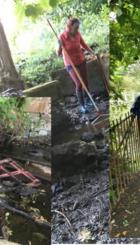.png)
Bothlin Burn Restoration and Climate Resilience Project
2022-10-27 • 4 comments • • Riverwoods 'Investment Readiness' Pioneers
Why our rivers?
The race to climate resilience, protecting our communities from climate breakdown, will be won or lost on rivers – and right now we're losing.
Damage to river systems has been so extensive that an urgent need has emerged, not only to conserve, but to restore these systems. Our degraded rivers are less able to cope with the rain we expect in the future, making flooding more likely to impact communities River rand riparian habitat restoration is an important measure to mitigate against these effects. Heavily modified rivers are often less resilient and have lost their ability to hold water in both droughts and floods.
Rivers are the veins of the Earth, transporting the water and nutrients needed to support the planet’s ecosystems, including human life. Unfortunately, they’re still threatened.
We must commit to recovering freshwater biodiversity, restoring natural river flows and cleaning up polluted water for people and nature to thrive.
Fish, amphibians, birds, insects, and invertebrates live in rivers, or find their food there. Rivers play a vital role in connecting habitats, and their value to plants and animals extends far beyond the surface area they cover.
Carbon starts its journey downstream when natural acid rain (which contains dissolved carbon dioxide from the atmosphere) dissolves minerals in rocks. This neutralises the acid and transforms carbon dioxide to bicarbonate in the water that then flows in our rivers. Bicarbonate can remain in water for thousands of years. (BBC)
Why Our River?
The Bothlin burn as it runs through the ancient woodland of the Moodiesburn Glen which sereates the communities of Moodiesburn and Chryston is a significant tribuary to the Luggie water and thereafter the clyde, restoring the river and riparian environment here has the capacity to bring multiple wins in tersm of biodiversity, community wellbeing, climate resilience, active travel, combatting health inequalites, improving community cohesion and restoration of fish populations. The burn being a positive contribution to the local environment rather than a polluted detrimental hazard is incredibly important to the surrounding communities who have expereinced an overwhelming loss of local greenspace which is essential to combat systemic health inequalities.
https://www.facebook.com/groups/NCCVols/permalink/2423176711147985/
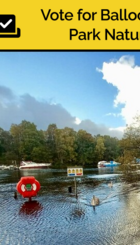
Don't Let Balloch Castle Country Park Sink
2022-10-17 • 24 comments • • Riverwoods 'Investment Readiness' Pioneers
https://ballochparkregen.co.uk/
Immerse Balloch Castle Country Park's one million annual local & international visitors in nature recovery by putting Riverwoods action & education at the heart of this unique Park's critical restoration. Harness the local community's love of the Park to help achieve healthy, vibrant riparian woodland networks in the world famous Loch Lomond and Trossachs National Park.
This 217 acre country park almost has it all:
- river, burns, loch lomond, beaches, slipway;
- extensive native woodland, outstanding veteran trees, designed parkland, walled garden;
- red squirrels, an array of wild fish species;
- A-Listed castle, gatehouses, playparks; &
- easy access by train, bus, bike and car from Glasgow.
Yet while annual visitor numbers have soared from 400,000 in 2003 to an estimated million now, this vast Park is suffering a rapid 'managed' decline - abandoned & sunken watercraft, riven with problem non-native, self-seeding conifers & bamboo, erosion undermining woodland, mature trees and paths. Anti-social behaviour & littering, no café, accessible toilets or shop, deteriorating fenced off castle, minimal organised education, events or volunteering opportunities, & substantial negative impacts associated with a huge increase in footfall.
The Park and its bonnie banks are visitor magnets but these outstanding natural & capital assets currently generate no income for reinvestment in the Park. As well as international visitors, it serves some of the most deprived areas of Scotland. Owned by Glasgow City Council and leased to West Dunbartonshire Council, Balloch Castle Country Park is sinking and desperately needs vision and resources now.
https://www.facebook.com/Ballochcastlecountrypark
Our Balloch Park: https://vimeo.com/764966107/3a04ec5a56
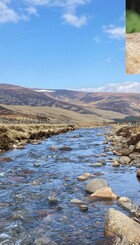
Saving the Upland Summer Mayfly
2022-10-27 • 7 comments • • Riverwoods 'Investment Readiness' Pioneers
The Upland Summer Mayfly is in trouble. It lives in rivers and streams in upland areas where it thrives in the cold water conditions found there. But climate change is making these streams warmer. Freshwater invertebrates like the Upland Summer Mayfly are the most threatened by these changes. They are being pushed further and further up in to the hills, in to increasingly smaller, isolated areas. The Upland Summer Mayfly (Ameletus inopinatus) has already disappeared from lower altitudes in some areas - if we don't act now we could lose it completely.
There is hope though. We can build resilience in upland catchments by keeping upland watercourses cool. By establishing trees along the banks of these rivers we can help stop the Upland Summer Mayfly being lost from south and central Scotland.
We will work with land managers at multiple locations across Scotland to identify high risk watercourses and key areas for tree planting. We'll survey streams to give a baseline of the invertebrate fauna present. We'll train volunteers to monitor the invertebrate life in these streams and work with land managers to design planting schemes.
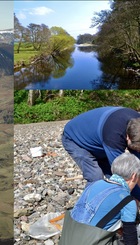
The River Ericht Catchment Regeneration Initiative
2022-10-24 • 10 comments • • Riverwoods 'Investment Readiness' Pioneers
The River Ericht, one of the most important spawning grounds for Atlantic Salmon in Europe, is in crisis. Extreme weather caused by climate change, historic and current land management practices and invasive species, are damaging the quantity and quality of water in the river and the health of its vegetation, woodlands and wildlife. As a result Salmon numbers are in steep decline and in danger of disappearing altogether.
Our new River Ericht Catchment Regeneration Initiative has been set up in response to this crisis. With a founding group of local angling, environmental and community-led organisations, we want to take a catchment scale approach to reviving this important river system. We will seek to engage landowners, farmers, businesses, communities, educational institutions, and relevant statutory bodies in restoring biodiversity, sinking carbon and enabling the sustainable livelihoods that depend on the Salmon and the river to thrive now and in the future.
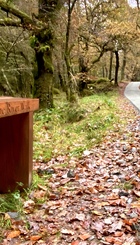
River Goil Nature Reserve
2022-10-17 • 5 comments • • Riverwoods 'Investment Readiness' Pioneers
We aim to augment existing Forestry and Land Scotland planting plans by creating 27,000 square metres of wetland habitat on the River Goil flood plain in Lochgoilhead. Managing water flow will reduce flood risk, improve biodiversity, connect wildlife corridors, and provide additional recreational and educational opportunities for our community, our businesses, and visitors. Initial funding will enable us to explore the feasibility of habitat creation to complement planned native woodland replanting. Further funding would enable us to undertake construction of the habitat and extend our paths network by creating a “floating” boardwalk, bringing people into closer contact with ecosystems they might not otherwise experience. We will create physical and online information points to educate people about the links between biodiversity and climate change.
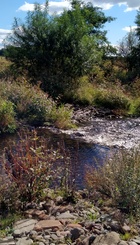
NithLife
2022-10-31 • 5 comments • • Riverwoods 'Investment Readiness' Pioneers
We are, Nith Life, a newly established group who share a passion for the River Nith catchment.
Nith Life has individual, community, and organisational representatives across multiple areas of interest who have come together around a common aim – to address ecological challenges along the river Nith and build meaningful cultural and educational connections throughout the catchment. We hope to do this through a catchment-based approach to create more resilient habitats, restoring biodiversity and reducing flood risk whilst encouraging a culture of connection with the river for local communities. In essence we want to become better stewards and celebrate the Nith’s as a resource for our local communities and as a significant part of our region’s sustainability plans for the future.
We have a big picture ethos:
· Entire river catchment - from source to sea
· A cross sector and interdisciplinary approach to innovative solutions
· Inclusive working - all ages, demographics and backgrounds
· Collaborative – working in partnership to build a network for mutually beneficial outcomes
The focus for our project is to work with local communities and partners to identify woodland creation opportunities in the Nith catchment area – using a pool of data, knowledge and networks – in order to strategically plan and identify where best to work at scale.
Nith District Salmon Fishery Board and the Nith Catchment Fishery Trust have not been involved in this proposal and do not give their endorsement.
Creating Climate Resilient Rivers in the Northern DSFB Region
2022-10-31 • 2 comments • • Riverwoods 'Investment Readiness' Pioneers
We wish to appoint a consultant to scope the opportunity for riparian tree planting within the Northern District Salmon Fishery Board area. Data shows that water temperatures are rising in rivers in the NDFSB region, threatening their delicate ecosystems. Riparian tree planting may help to address this issue, as well as offering other benefits.
The main roles for this 2-year contract will include:
- Scoping opportunities for riparian planting within the NDSFB
- Mapping suitable areas and preparing a budget for planting and maintenance
- Identifying funding streams
- Working with other organisations to deliver maximum benefit
The project will help to ensure that the salmon rivers of the Far North are better protected from the threat of rising water temperatures associated with climate change. The Northern DSFB covers some 1,000km2, much of which is located within the environmentally important Flow Country which is currently bidding for World Heritage Site status.
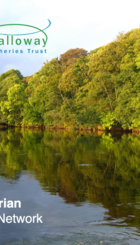.png)
Annan Riparian Restoration Network
2022-10-31 • 6 comments • • Riverwoods 'Investment Readiness' Pioneers
The Annan Riparian Restoration Network aims to expand and restore a network of broadleaf woodlands across the River Annan and its tributaries. By planting a mixture of native species at key locations we aim to enhance biodiversity whilst crucially building climate resilience into the landscape.
This ambitious project will bring together multiple landowners, with combined landholdings of over 35,000ha throughout the catchment. The project will consult, engage and involve local stakeholders, community groups and schools to improve their local surroundings for people and nature.
The project will use data and local knowledge to identify areas where riparian tree planting will provide multiple benefits, enhancing water quality and biodiversity, keeping waters shaded from increasing summer temperatures, providing natural flood management and connecting places for nature throughout the landscape. Through better management, sharing knowledge and protection of these important areas around watercourses there will be opportunities for communitites to enjoy, understand and engage with their natural environment. This will have benefits for both physical health and mental wellbeing as well as the health of the river.
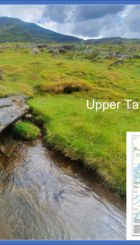
Upper Tay Catchment Communities
2022-10-25 • 21 comments • • Riverwoods 'Investment Readiness' Pioneers
Perthshire Nature Connections Partnership (PNCP) is a long-term, nature-based vision to create a connection across Highland Perthshire between the Cairngorms and the Loch Lomond & The Trossachs National Parks. It works with a range of organisations across community, environment and land management (website for details).
PNCP promotes integrated, large-scale ecological restoration of a sustainable and resilient landscape that provides environmental, socio-economic and health and wellbeing benefits to communities and land-managers.
PERTHSHIRE NATURE CONNECTION PARTNERSHIP – UPPER TAY CATCHMENT COMMUNITIES
PNCP knows where our area can deliver vitally important landscape changes, supporting biodiversity and addressing climate change. Landscape change will put Natural Capital ‘in the bank’ for us all – we have been overdrawn for too long. UPPER TAY CATCHMENT COMMUNITIES was an established working title for us prior to Riverwoods.
Our transition to a nature-based landscape needs supporting. Our area includes sparsely populated and remote areas, and significant but seasonal tourist activity. And nature across the area faces a worrying future.
Our local communities can be as nature-based as can any area’s communities – they are adaptable and innovative; but they must not be left behind. The landscape is not ‘urban’ or ‘rural’ capital – it is natural capital for everyone.
PNCP's published programme (Apr 2022) is a good framework, and the time has arrived for landscape-scale change on the ground.
Riverwoods - UPPER TAY CATCHMENT COMMUNITIES will unlock opportunities for innovation in nature-finance, providing specialist support to help us to deliver change faster and further. PNCP will enable change-projects to deliver, however best we can. We are always seeking new partners – businesses, communities and land-managers.

Building a flood resilient Glasgow
2022-10-18 • 4 comments • • Riverwoods 'Investment Readiness' Pioneers
The Clyde and Loch Lomond area is facing increasing flood risks. There are currently around 98,000 homes and businesses at risk from flooding, and this may increase to 130,000 by 2080 due to climate change.
These extreme weather events affect the lives of Glaswegians, communities, homes and businesses, particularly within vulnerable areas, such as Drumchapel, Maryhill and Summerston, Possilpark, Bridgeton and Dalmarnock.
This project, together with local residents will develop a series of natural flood defenses that can reduce flood risks while providing additional positive benefits to affected communities.
Some of the interventions will include new street trees, woodland and sustainable drainage systems, using nature for managing floods, while increasing access to quality green spaces. If you are part of a community affected by flooding, please reach out to co-design these new vital projects.
For more information visit treesasinfrastructure.com and watch this video.
